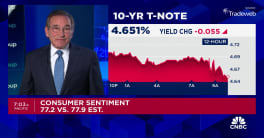Builder confidence in the market for new single-family homes ended a three-month slide in May, as the Housing Market Index ticked up two points. This month that two-point gain evaporated as the index slid back down to 68. The National Association of Home Builders (NAHB) said the retreat of the measure, which it sponsors in conjunction with Wells Fargo, in June was, in large part, due to elevated lumber prices.
"Builders are optimistic about housing market conditions as consumer demand continues to grow," said NAHB Chairman Randy Noel. "However, builders are increasingly concerned that tariffs placed on Canadian lumber and other imported products are hurting housing affordability. Record-high lumber prices have added nearly $9,000 to the price of a new single-family home since January 2017."
"Improved economic growth, continued job creation and solid housing demand should spur additional single-family construction in the months ahead," said NAHB Chief Economist Robert Dietz. "However, builders do need access to lumber and other construction materials at reasonable costs in order to provide homes at competitive price points, particularly for the entry-level market where inventory is most needed."
Analysts polled by Econoday expected the HMI to continue strong, with estimates ranging from 68 to 72. The consensus was for it to remain at 70.
The index is derived from a monthly survey that NAHB conducts among its new home builder members. They are asked to gauge their perceptions of the current single-family home sales market and about their sales expectations for sales over the next six months as "good," "fair" or "poor" and to rate buyer traffic as "high to very high," "average" or "low to very low." Scores for each component are then used to calculate a seasonally adjusted index where any number over 50 indicates that more builders view conditions as good than poor.
Each of the three components was down a single point from its May level. The index measuring current sales conditions fell to 75; the component gauging expectations in the next six months dropped to 76, and the metric charting buyer traffic edged down to 50.
Regional HMI scores are computed as three-month moving averages. They were mixed, with the Northeast region rising 2 points to 57 and the South dipping 1 point to 71. The West and Midwest were unchanged at 76 and 65, respectively.







